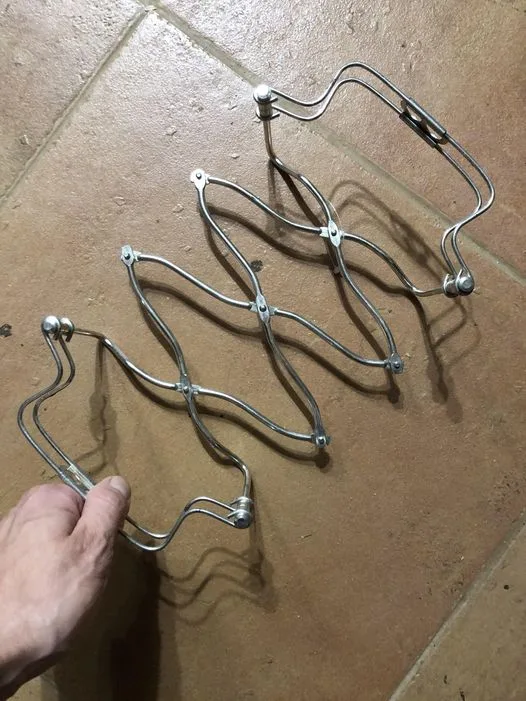The vintage casserole caddy trivet, often made of expandable metal wire, emerged as a practical kitchen accessory in the mid-20th century. During this time,
home cooks sought ways to make serving and storing hot dishes more convenient and stylish. The design of the caddy typically featured a wireframe structure that could be expanded to accommodate various sizes of casserole dishes. Its origins can be traced back to an era when kitchen gadgets were becoming increasingly innovative, reflecting the growing emphasis on functionality and aesthetics in home cooking. The caddy’s metal construction and expandable design were representative of the era’s focus on durable and versatile kitchen tools.
The primary purpose of the casserole caddy trivet was to provide a stable and heat-resistant surface for serving hot dishes directly from the oven or stove to the table. Its expandable feature allowed it to fit a range of dish sizes, making it versatile for different cooking needs. The metal wire construction helped protect countertops and tables from heat damage, while the caddy’s design often included raised edges to prevent dishes from sliding. Additionally, the caddy could be used as a decorative element in the kitchen or dining area, adding a touch of vintage charm to meal presentations. Its functionality extended beyond just serving; it also made transporting hot dishes more convenient and safe.

Leave a Reply